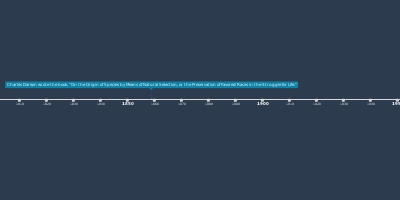DNA Timeline Part 2
Category: Otro
Actualizado: 4 feb 2020
Autores

Created byTarun Kalyan X Rayapati
Attachments
Eventos
1958: Matthew Meselson and Franklin Stahl replicates at not super-fast pace, and that each strand from the parent DNA molecule ends up paired with a new strand1958: Fred Sanger worked on the structure of protein and investigated ways to sequence RNA because it was smaller1961: Sydney Brenner, François Jacob and Matthew Meselson discover that mRNA takes information from DNA in the nucleus to the protein-making machinery in the cytoplasm1966: Marshall Nirenberg and others figure out the genetic code that allows nucleic acids with their 4 letter alphabet to determine the order of 20 kinds of amino acids in proteins.1972: Scientists produce recombinant DNA molecules by joining DNA from different species and subsequently inserting the hybrid DNA into a host cell.1975: Frederick Sanger and colleagues, and Alan Maxam and Walter Gilbert, both develop rapid DNA sequencing methods.1978: Werner Arber known for the discovery of restriction endonucleases known for his work leading to the development of recombinant DNA technology1981: Scientists successfully add stably inherited genes to laboratory animals.1980: Paul Berg along with Walter Gilbert and Frederick Sanger were awarded for their contributions to basic research involving nucleic acids1983: The polymerase chain reaction, or PCR, is used to amplify DNA.1987: The first comprehensive genetic map is based on variations in DNA sequence that can be observed by digesting DNA with restriction enzymes.1990: The Department of Energy and the National Institutes of Health announce a plan for a 15-year project to sequence the human genome.1998: The first genome sequence of a multicellular organism, the round worm.1999: The first finished, full-length sequence of a human chromosome is produced.2003: The Human Genome project is over. The finished human genome sequence will be at least 99% accurate.
Comments